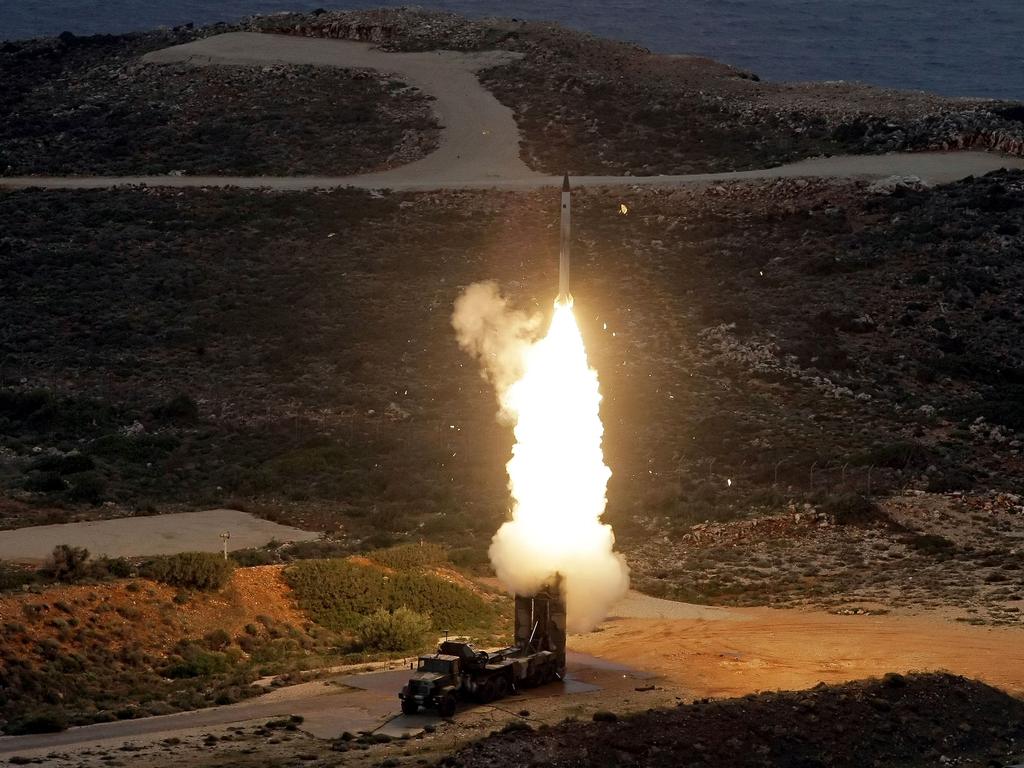Ukraine cut off from key coastline as Putin goes hypersonic
Russia has siezed a key coastline connecting Russian-annexed Crimea to the ‘breakaway republics’ of Donetsk and Luhansk.
Russia won a rare but important victory in its grinding attempts to overcome fierce Ukrainian resistance on Saturday when the Kyiv authorities admitted “occupation troops” had secured the coastline of the Sea of Azov in the southeast of the country.
The Ukrainian General Staff admitted it had “temporarily lost access” to the Sea of Azov, the coast of which connects Russian-annexed Crimea to the “breakaway republics” of Donetsk and Luhansk and then to Russia itself.
Forming a bridge along that strip of land was a key early objective of the Russian invasion. The last major city on the coastline, Mariupol, also appeared to be on the verge of falling, as Russian and Ukrainian troops fought in the city centre and around the Azovstal steel plant, one of the biggest in Europe.
The city’s capture would extend Russian control of Donetsk, of which Mariupol was the largest city remaining in Ukrainian hands after the war of 2014. It would also allow Russian troops to concentrate their firepower on the strategic town of Mykolaiv to the west of Crimea, which has the main bridge over the Southern Bug river estuary, and then to Odessa, securing Ukraine’s total seaboard.
The Russian Defence Ministry on Saturday claimed its army had fired hypersonic missiles on Ukraine from its Kinzhal weapons system, destroying an underground weapons storage facility. The Ukrainian Defence Ministry confirmed “a new type of missile” had been deployed against an arms depot in the village of Deliatyn in western Ukraine, destroying munitions.
If confirmed, the attack would mark the first time this type of advanced manoeuvring missile had been used in the three-week-long invasion.
Kinzhal missile systems are known for their manoeuvrability, speed and ability to fly low, avoiding air defence systems and radar. They manoeuvre by interacting with control surfaces or other propulsion in their atmosphere, said Tom Karako, director of the Missile Defence Project at the Centre for Strategic and International Studies.
“Hypersonic missiles broadly have the characteristics of not being predictable,” he said. He added that while the use of the Kinzhal – meaning “dagger” – would be an escalation if confirmed, it was not greatly different from Russia’s existing use of the ground-launched Iskander system, which can fire supersonic missiles.
Supersonic missiles are those that travel faster than the speed of sound. Hypersonic missiles travel at more than five times the speed of sound.
Russia’s use of this missile could be experimental, or motivated by a desire to demonstrate power to the West, Karako said. “The important thing is it’s an air-launched ballistic missile, so not only is it manoeuvrable, but you also don’t know where it’s coming from, because a fighter jet and a bomber can go to lots of different places, from where they can launch it,” he said. “It reduces the predictability – you don’t know where to look for it.”
THE SUNDAY TIMES





To join the conversation, please log in. Don't have an account? Register
Join the conversation, you are commenting as Logout